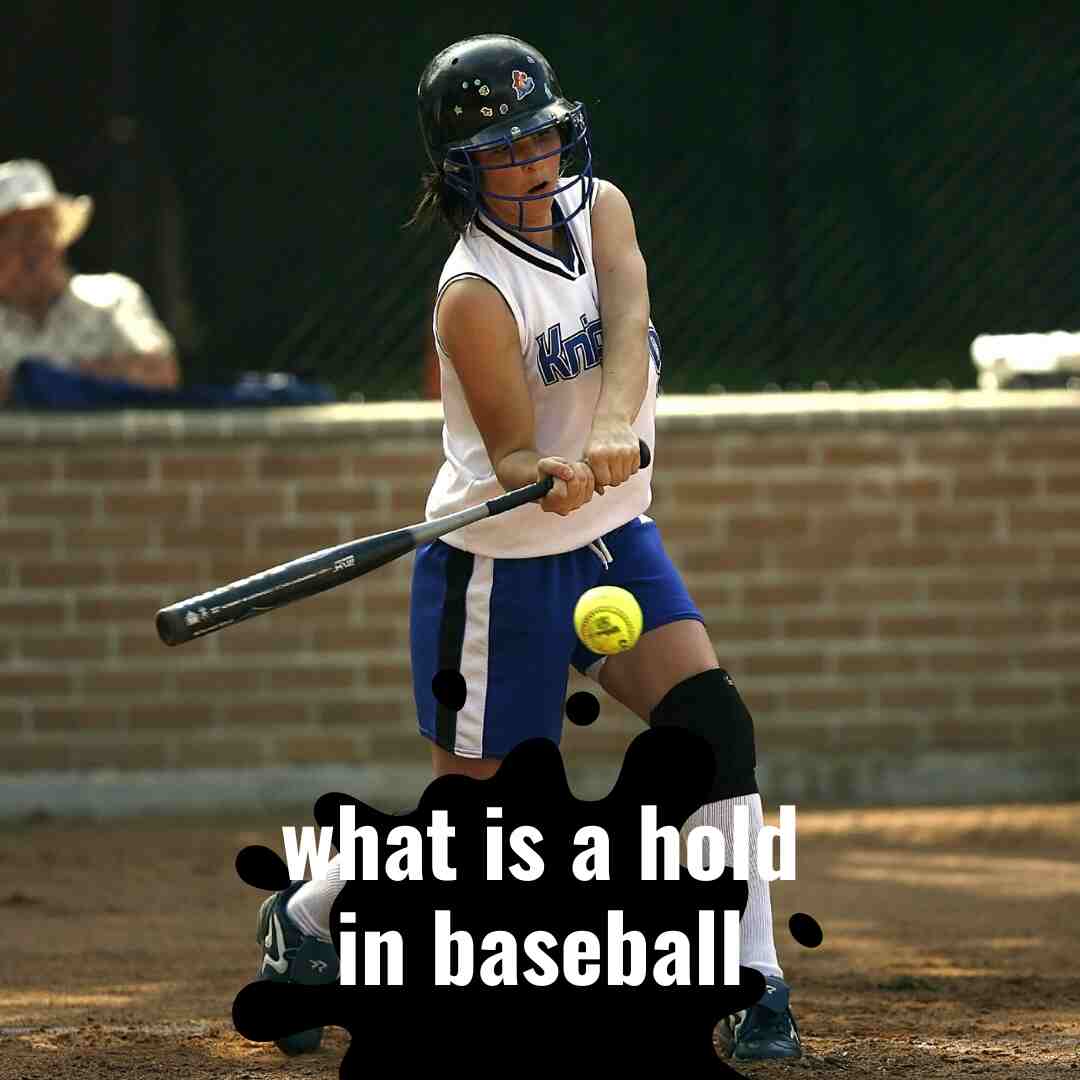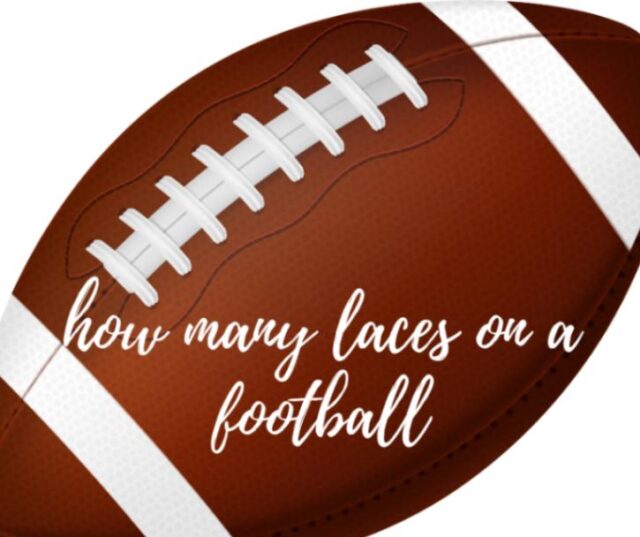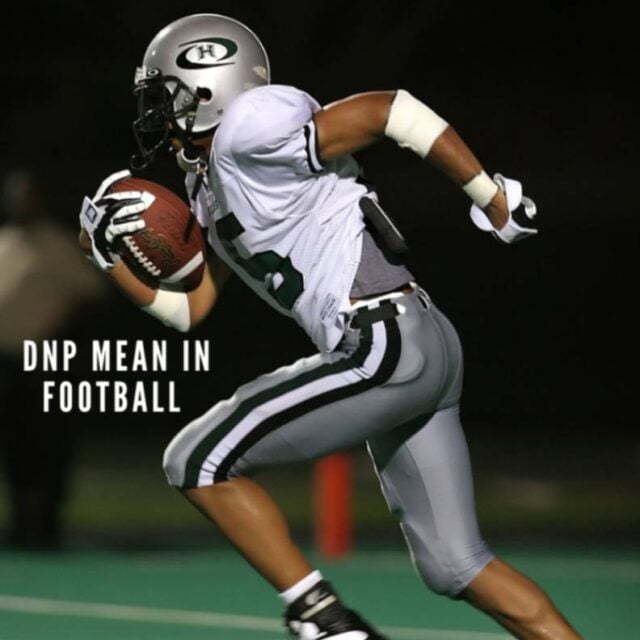
Introduction to Holds in Baseball
Understanding ”what is a hold in baseball” in the Game
When we peel back the layers of baseball, we uncover terms like “what is a hold in baseball” that may not be in the limelight but are crucial to the game’s fabric. A hold in baseball is awarded to a relief pitcher who performs a specific yet crucial task. He enters the fray when his hold in baseball team leads and exits without giving up that lead, yet doesn’t stay on to finish the game. This pitcher is not the one making the last strike to end the game; instead, he’s the force that keeps the team’s hope alive during those tense middle innings. What is a hold final victorious punch but the strategic moves that keep a team in the running for a win.
The Importance of Holds in Baseball’s Strategy
Diving into the strategic depths of baseball, we find that understanding “what is a hold in baseball” is key to appreciating the game’s complexities. This seemingly obscure stat actually shines a light on the pitcher’s ability to handle pressure without faltering. It’s the segment of the game where the starter has exhausted his prowess, and the team looks to a middle reliever to hold baseball down the fort. The baseball hold is an indicator of how well these often-overlooked players perform in the clutch, bridging the gap to the closer and, quite possibly, to victory. It’s an acknowledgment of their role in steering the game towards a favorable outcome, an essential clog in the team’s machine.
Exploring the Fundamentals of a Hold in Baseball
whats a hold in baseball !
When we unpack the question, “What is a hold in baseball?” we get to one of the game’s key strategic elements. A holds in baseball is a statistic awarded to a relief pitcher who enters the game under pressure and manages to keep the team in the lead. baseball hold definition like a behind-the-scenes award for those who help the stars shine, ensuring that the game is still within reach for a closer to come in and seal the deal. Think of what is hold in baseball as a nod to the middle reliever’s skill in navigating the high tides of the game without letting the ship capsize.
Meeting the Criteria for a what is a hold in baseball
To dive into the specifics of “what is a hold in baseball,” let’s look at the baseball hold stat checklist a pitcher must tick off to earn one. He steps onto the field when victory is still up for grabs and must exit with the lead intact, without being the final pitcher. It’s a relay race where he’s not the last runner but is pivotal in maintaining the lead. definition of hold in baseball for baseball enthusiasts, knowing the criteria for a hold is like understanding the key moves in a chess game – it’s about strategy and precision.

The Crucial Contribution of Setup Men and Middle Relievers
Providing insight into “what is a hold in baseball” invariably brings setup men and middle relievers into the picture. These players, who operate like magic between the starter and the closer, are the pivotal figures in the chase for hold stat in baseball. Their goal is to keep the game’s rhythm and flow intact, not to create a spectacular finale. Even though their names may not resound as much in the stands, they play a crucial part in telling a story that ends in victory. They are the ones that protect the team’s lead and maintain it till the game’s conclusion.
Introduction: Unraveling the Mystery of what is a hold in baseball
Demystifying the “what is a hold in baseball” in Baseball’s Strategic Playbook
“What is a hold in baseball?” is a question that frequently gets lost in the commotion of home runs and strikeouts in the vast theater of baseball. A hold is the unsung hero’s job; it’s the middle believer’s responsibility to baseball holds the fort during that vital last inning, without having to take the final bow. This relief pitcher has a special set of circumstances as he takes the mound: the game is on the line, and he needs to hold the lead. When he does this, the team advances toward victory and he receives a hold, an important play. It’s a big but subtle move that shows the tenacity and clutch work of a pitcher.
The Importance ofwhat is a hold in baseball Complex Game
Delving into the impact of a “hold” reveals its pivotal role in the fabric of baseball. It isn’t just another number in the stats column; it’s a testament to a pitcher’s skill under duress. The narrative shifts from the starting pitcher to this middle reliever when the game is teetering—a crucial bridge to the closing act. Holds are not just about maintaining leads; they encapsulate the essence of strategic play, spotlighting pitchers who, while they may not grab the headlines, are instrumental in scripting a team’s triumph.
The Basics of a Hold
A hold may not be as well-known as a home run, yet “what is a hold in baseball?” is a question with an answer rooted deeply in the sport’s strategy. It’s an accolade given to relief pitchers who enter the game at a critical juncture and manage to keep their team ahead. This badge of honor is for those adept at navigating the high seas of competition, ensuring the team remains on course for success. In simpler terms, a hold is the nod a relief pitcher receives for doing their job well in the game’s crucial moments.
whats a hold in mlb the show
whats a hold in mlb the show is a statistical category used to credit relief pitchers for preserving a lead while exiting a game before it is finished. To earn a hold, a relief pitcher must enter the game in a save situation (usually with their team in the lead), record at least one out, and leave the game without surrendering the lead. Mlb hold are often used to measure a relief pitcher’s effectiveness in setting up the closer to finish the game successfully.
In baseball, a “hold” is a statistic that recognizes the effectiveness of relief pitchers in maintaining a lead during their time on the mound. The term “hold” is abbreviated as HLD in baseball statistics. To achieve a hold, a relief pitcher typically enters the game in a save situation, which means their team is in the lead, and they proceed to record outs without relinquishing that lead before exiting the game. How do you get a hold in baseball showcases a pitcher’s ability to contribute positively to the team’s success, serving as a bridge between the starting pitcher and the closer. Definition of a hold in baseball also extends to the pitcher’s grip on the ball, crucial for control and executing various pitches. The art of baseball pitching holds involves mastering different grips and techniques to optimize control, spin, and movement on the ball. what does hold mean in baseball, a hold in baseball is both a statistical measure of relief pitcher effectiveness and a fundamental aspect of pitching technique.
what are holds in mlb the show, In the context of MLB The Show, a “hold” is a statistic that measures the effectiveness of a relief pitcher coming into the game to maintain his team’s lead and then exiting without relinquishing that lead. what is a hold in mlb to earn a hold in the game, a relief pitcher typically needs to enter a game in a save situation, record at least one out, and leave the game with the lead still intact.
how to get a hold in baseball, Getting a good hold on the baseball is crucial for control and accuracy when pitching or throwing. For pitchers, the grip can vary depending on the type of pitch they want to throw. One common grip is the four-seam fastball grip, where the pitcher places the index and middle fingers across the horseshoe seams of the baseball, and the thumb underneath. This grip allows for a straight and fast throw.
Defining a Hold in Baseball Vernacular
How Pitchers Earn what is a hold in baseball
Regarding the question, “What is a hold in baseball?” Think about the exact requirements a pitcher needs to fulfill. When a pitcher enters a game with a save opportunity, protects the lead, and exits the field without ending the game, he is awarded a hold. His job is to hold the lead, not to cross the finish line, just like in a relay race. Both supporters and players must comprehend the requirements for a hold in order to appreciate the significance of each play that contributes to the team’s victory.
The Role of the Setup Man and Middle Reliever in Securing a Hold
When unpacking “what is a hold in baseball?” We come to appreciate the setup men and middle relievers as the linchpins of the game. While they may not command the limelight like closers, their role is just as critical—they are the guardians of the lead. In the strategic narrative of baseball, these players are the steady hands that keep the team’s advantage safe, setting the stage for the closer to bring the game home.
How a Hold Works in a Game
The Conditions that Set the Stage for a Hold
The path to earning a hold is akin to knowing a secret handshake. All time save leaders pitcher enters with his team in the lead, perhaps hanging on by a mere thread. The conditions are strict mlb all time save leaders the lead must be narrow, and the potential tying run close at hand. The save leaders all time pitcher’s task is to navigate this scenario with finesse, maintaining the lead before making way. Understanding when and how a hold occurs is essential for grasping the game’s complexities.
The Strategy Behind Employing a Hold
In our investigation of “what is a hold in baseball?” We explore the game’s mental elements. Using a hold is a wit-based move that requires a thorough comprehension of both the opponent and the rhythm of the game. To preserve the lead, it’s all about inserting the appropriate pitcher when needed—a well-thought-out move that shows the manager believes in the depth and dependability of his bullpen.
Distinguishing a Hold from a Save
To the uninitiated, holds and saves may seem like close relatives, but they serve different roles in baseball’s narrative. A save is the closing act, the grand finale, while a hold is the struggle to maintain the lead before the story reaches its climax. They are individual threads in the fabric of the game, each carrying its weight and contributing to the outcome. Understanding the difference between a hold and a save is fundamental for fans and players, marking the nuances that make baseball a game of strategy and anticipation.
The Strategic Essence of Holds in Baseball
The Tactical Role of Holds in Pitching Strategy
When delving into the question, “What is a hold in baseball?” we uncover its tactical significance in shaping a manager’s pitching decisions. A hold is not just a statistic; it’s a critical juncture that dictates which pitcher is trusted to navigate the game’s high-stress moments—those pivotal innings that lead up to the closer’s entrance. Managers must weigh their options, consider potential batter matchups, and factor in the current game dynamics to make a call that could pivot the game’s outcome. A pitcher’s ability to secure a hold can sway the strategic direction of the game, showcasing his mettle in the face of mounting pressure.
Balancing Act: Holds and Bullpen Management
The concept of a hold is intricately linked to the art of managing a bullpen. Understanding “What is a hold in baseball?” involves recognizing the strategic maneuvers a manager employs to secure this statistic. Each decision to keep a pitcher in for a hold, or to save him for future games, is like moving a piece on a chessboard. The hold’s role becomes a fulcrum, tilting the balance between optimizing each pitcher’s performance and safeguarding the team’s chances for a win. It’s this intricate balance that defines the bullpen’s ebb and flow, making the pursuit of holds a subtle yet profound element of game management.
Holds as a Metric of Player Value and Contract Negotiation
In the economics of baseball, “What is a hold in baseball?” translates to a potential increase in a pitcher’s market value. Holds, while less glamorous than saves, highlight a pitcher’s competence in clutch situations—a trait that does not go unnoticed during contract negotiations and player evaluations. This statistic can elevate a pitcher’s standing, portraying him as a linchpin in the team’s defensive strategy. As such, a consistent record of securing holds can position a reliever as an attractive asset, boosting his value to current and prospective teams.
Through these aspects, we see how holds contribute to the nuanced ecosystem of baseball, influencing decisions that ripple through the fabric of the game, from on-field tactics to front office negotiations.
Unraveling the Intricacies of Holds in Baseball
Distinguishing Holds from Saves in Baseball
In examining “what is a hold in baseball,” it is important to remember that a hold is not the same as a save. A hold, in contrast to a save, is more about maintaining the advantage through crucial junctures without the game-winning goal. A pitcher who establishes a hold is comparable to an important midpoint in a captivating book—one that builds to a suspenseful conclusion without providing the resolution. This crucial position adds to the game’s plot by keeping the story suspenseful until the closer steps in to wrap things up.
The Real Challenge of Securing a Hold
Addressing the question, “What is a hold in baseball?” also means dispelling the myth that achieving a hold is a walk in the park. It’s far from just clocking in and out. Pitchers tasked with holding the lead navigate through a minefield of high-pressure situations, often against the heart of the opposing lineup. Securing a hold requires a delicate blend of skill, strategy, and nerve. Like a tightrope walker, a reliever must tread carefully, knowing that every pitch could tilt the game’s balance.
The Unofficial Yet Essential Nature of Holds
Although not officially tallied like strikeouts or home runs, understanding “what is a hold in baseball” unveils its unofficial yet invaluable status. The hold might not make it to the glamorous categories of mainstream baseball statistics, but it’s a metric that offers a deep dive into a pitcher’s effectiveness and the managerial acumen of when and how to deploy the bullpen. For those who live and breathe baseball, the hold is an understated indicator of a game’s suspense and a team’s strategic depth.
conclusion:
The Strategic Role of a Hold in Baseball
Understanding “what is a hold in baseball” helps us understand its tactical importance in the game. A hold is just as important as a no-hitter or walk-off home run, but it may not make the same headlines. It’s about a reliever entering the game at a critical juncture to keep a lead intact. This is comparable to a deft move in a close-quarters game of strategy, where every choice you make could mean the difference between victory and defeat. Knowing what holds entails knowing the underlying forces that influence game results.
Holds: The Thrill Behind Baseball’s Strategy
As we close out our innings on this topic, it’s evident that holds are an integral part of baseball’s allure. These moments might not conclude the action, but they’re essential in the narrative that leads to the final play. Holds inject suspense and strategy into the mix, ensuring the game’s tempo remains high and the stakes even higher. They represent the quiet, yet formidable efforts that often go unnoticed yet are instrumental in the fabric of a thrilling baseball match. In essence, holds are like the critical middle chapters of a gripping novel, setting the stage for a grand finale that keeps fans riveted to the very last pitch
Frequently Asked Questions:
- What exactly is a “hold” in baseball? A hold is a statistic awarded to a relief pitcher who meets certain criteria. The main point is that the pitcher enters the game in a save situation, maintains his team’s lead, and hands over the ball to another reliever without his team losing the lead.
- Relief Pitcher In the realm of relief pitchers, career innings pitched leaders often emerge as the unsung heroes, showcasing their durability and effectiveness over the long haul. The measure of a relief pitcher’s effectiveness goes beyond just career innings pitched, extending to crucial statistics like holds, which vividly illustrate their ability to maintain a team’s lead and set up the closer for success. What is a setup pitcher, it integral to a bullpen’s success, specializes in bridging the gap between the starter and closer, and their effectiveness is often gauged by stats such as holds and career innings pitched leaders. To achieve a hold, a relief pitcher must enter the game in a save situation, navigate through innings, and exit without surrendering the lead—a pivotal aspect in evaluating the overall effectiveness of a relief pitcher.
- How does a pitcher qualify for a hold? To get a hold, a relief pitcher must come into the game in a save situation – meaning they could earn a save if they finished the game – but they don’t finish the game. They must leave the game without having given up the lead.
- Is a hold as significant as a save? While not as prestigious as a save, a hold is still an important stat. It recognizes the crucial role middle relievers play in bridging the gap between the starting pitcher and the closer.
- Can a pitcher get a hold and a win in the same game? Nope! A pitcher cannot earn both a hold and a win in the same game. If a pitcher qualifies for the win, they are ineligible for a hold.
- Does every league track holds as an official stat? The hold is not an official statistic in Major League Baseball (MLB), but many leagues and statisticians track it to evaluate a relief pitcher’s effectiveness.



